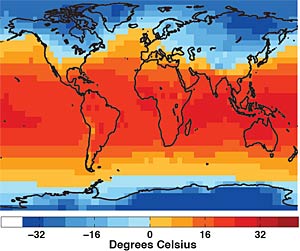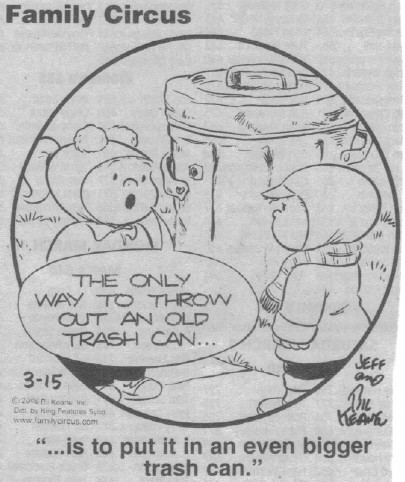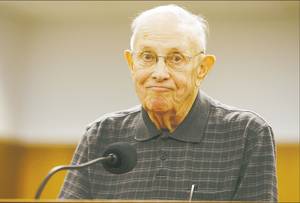Happy birthday to you…You belooooong in a zoo. Actually you made Zoos absolutely necessary as ARKS for the species that our use of oil has driven either to extinction or near extinction.
http://www.wired.com/wiredscience/2009/08/oilat150/
Wired Science News for Your Neurons
Happy 150th, Oil! So Long, and Thanks for Modern Civilization
- By Alexis Madrigal

- August 27, 2009 |
- 2:39 pm |
- Categories: Energy
One hundred and fifty years ago on Aug. 27, Colonel Edwin L. Drake sunk the very first commercial well that produced flowing petroleum.
The discovery that large amounts of oil could be found underground marked the beginning of a time during which this convenient fossil fuel became America’s dominant energy source.
But what began 150 years ago won’t last another 150 years — or even another 50. The era of cheap oil is ending, and with another energy transition upon us, we’ve got to scavenge all the lessons we can from its remarkable history.
“I would see this as less of an anniversary to note for celebration and more of an anniversary to note how far we’ve come and the serious moment that we’re at right now,” said Brian Black, an energy historian at Pennsylvania State University and and author of the book Petrolia. “Energy transitions happen and I argue that we’re in one right now and that we need to aggressively look to the future to what’s going to happen after petroleum.”
When Drake and others sunk their wells, there were no cars, no plastics, no chemical industry. Water power was the dominant industrial energy source. Steam engines burning coal were on the rise, but the nation’s energy system — unlike Great Britain’s — still used fossil fuels sparingly. The original role for oil was as an illuminant, not a motor fuel, which would come decades later.
Before the 1860s, petroleum was a well-known curiosity. People collected it with blankets or skimmed it off naturally occurring oil seeps. Occasionally they drank some of it as a medicine or rubbed it on aching joints.
Some people had the bright idea of distilling it to make fuel for lamps, but it was easier to get lamp fuel from pig fat or whale oil or converted coal. Without a steady supply, there was no point in developing a whole system and infrastructure dedicated to petroleum.
Nonetheless, some Yankee capitalists from Connecticut were convinced that oil could be found in the ground and exploited. They recruited “Colonel” Edwin Drake, who was not a Colonel at all, mostly because he was charming and unemployed. He, in turn, found someone skilled in the art of drilling, or what passed for it in those days.
Drake and his sidekick “Uncle Billy” Smith started looking underground for oil in the spring of ‘59. They used a heavy metal tip attached to a rope, sending it plummeting down the borehole like a ram to break up the rock. It was slow going.
On Aug. 27, 1859, at 69 feet of depth, Drake and Smith hit oil. It was a big deal, but the Civil War stalled the immediate development of the rock oil industry.
“When the discovery happened, the few people who were there and not involved in the war, went around and bought all the property they could and had outside investors come in,” Black said. “But the real heyday of the development happened from 1864-1870. It’s that 11-year period when the little river valley was the world’s leading supplier of oil.”
The “little river valley” in western Pennsylvania earned the nickname Petrolia. Centered in the Oil Creek valley about one hundred miles north of Pittsburgh, the wells of Pithole, Titusville and Oil City pumped 56 million barrels of oil out of the ground from 1859 to 1873.
:}
Though there is some question about whether it was the first well in the world or even in the US:
And let's get the record straight. The Drake well was not
the first oil well in the U.S. Historical geologic research data
my father paid for circa 1979 pegged a well outside Oneida Tenn.
as the first producing oil well in the U.S. It preceeded the
Drake Well by a couple of decades or more (I believe the well
was struck around 1819 but I am going from memory as I read the survey
a long time ago). Unfortunately it was deep in mountainous terrain
making it nearly impossible to commercialize. Plus there wasn't
much of a use for oil yet. The well was accidental - they were actually
after water. The survey mentioned the Drake well as being considered
the first viable commerical well. But the Drake well definitely was
not the first oil well in the U.S. Dad commissioned the survey because
of a good oil producing lease on the mountain that over looks
Huntsville Tenn. In fact, the land was leased from Bobby York - one of
the grandsons of Alvin York. Yes, that Alvin York, a.k.a. "Seargent York"
of WWI fame.
:}
Even then there were people who thought that the mass consumption of oil would cause big problems:
http://www.enotes.com/earth-science/arrhenius-svante-august
Arrhenius, Svante August (1859-1927)
Swedish chemist
Svante August Arrhenius was awarded the 1903 Nobel Prize in chemistry for his research on the theory of electrolytic dissociation, a theory that had won the lowest possible passing grade for his Ph.D. two decades earlier. Arrhenius’s work with chemistry was often closely tied to the science of physics, so much so that the Nobel committee was not sure in which of the two fields to make the 1903 award. In fact, Arrhenius is regarded as one of the founders of physical chemistry—the field of science in which physical laws are used to explain chemical phenomena. In the last decades of his life Arrhenius became interested in theories of the origin of life on Earth, arguing that life had arrived on our planet by means of spores blown through space from other inhabited worlds. He was also one of the first scientists to study the heat-trapping ability of carbon dioxide in the atmosphere in a phenomenon now known as the greenhouse effect.
Arrhenius was born on February 19, 1859, in Vik (also known as Wik or Wijk), in the district of Kalmar, Sweden. His mother was the former Carolina Thunberg, and his father was Svante Gustaf Arrhenius, a land surveyor and overseer at the castle of Vik on Lake Mälaren, near Uppsala. Young Svante gave evidence of his intellectual brilliance at an early age. He taught himself to read by the age of three and learned to do arithmetic by watching his father keep books for the estate of which he was in charge. Arrhenius began school at the age of eight, when he entered the fifth-grade class at the Cathedral School in Uppsala. After graduating in 1876, Arrhenius enrolled at the University of Uppsala.
:}






 Febuary
Febuary








